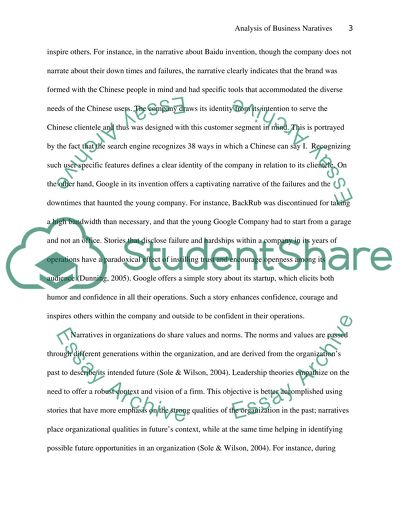Cite this document
(“Analysis of a Business Narrative Essay Example | Topics and Well Written Essays - 1500 words”, n.d.)
Retrieved from https://studentshare.org/journalism-communication/1489551-analysis-of-a-business-narrative
Retrieved from https://studentshare.org/journalism-communication/1489551-analysis-of-a-business-narrative
(Analysis of a Business Narrative Essay Example | Topics and Well Written Essays - 1500 Words)
https://studentshare.org/journalism-communication/1489551-analysis-of-a-business-narrative.
https://studentshare.org/journalism-communication/1489551-analysis-of-a-business-narrative.
“Analysis of a Business Narrative Essay Example | Topics and Well Written Essays - 1500 Words”, n.d. https://studentshare.org/journalism-communication/1489551-analysis-of-a-business-narrative.


